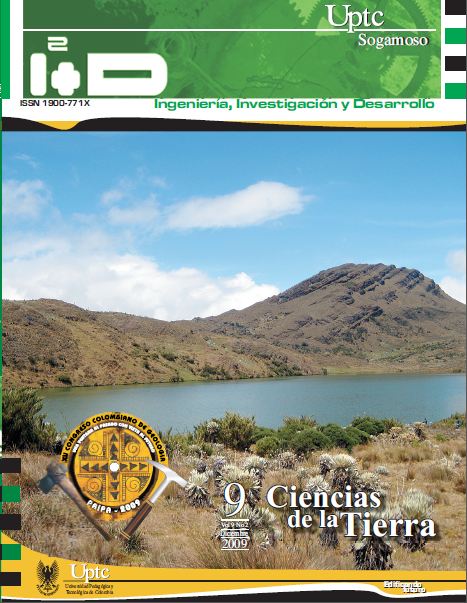Saline springs in the Andean Region: Findings from the Microbiology

Abstract
The aim of this study was to identify the composition of the microbial iversity on three terrestrial saline springs in colombian Andes (Departments of Risaralda and Boyacá). For the accomplishment of this work two located saline springs in Central Mountain range (Salado de Consotá and Salado La Cristalina) and one located in the Eastern Mountain range were selected (Salpa). The saline spring Salado de Consotá is characterized by its archaeological findings, their high salinity, pH neutral oscillating between 6,7 and 7,4, and high values of calcium, chlorides and sulphates. Whereas the spring La Cristalina one (Arabia) has pH alkaline near 8,5, a contained calcium minor, but also high values of sulphates and chlorides. The saline spring Salpa, whose chemical composition is characterized by the high sulphate concentration is used at the moment for the commercial production of Na SO . 2 4 The obtained results show that these habitat are highly diverse and that still it is left much to know on his diversity, nevertheless, is evident that the microbial composition is dominated by organisms of the class alpha and gamma proteobacteria.
Keywords
saline springs, microbial diversity, subduction
References
- Acevedo, A. y S. Martínez. (2004): La sal y las mercancías en las provincias Quimbaya. En: López, C. y Cano, M. (ed.) Cambios ambientales en perspectiva histórica. Ecorregión del Eje Cafetero. Universidad Tecnológica de Pereira, Programa Ambiental GTZ, Pereira, Colombia. pp. 167-187.
- Alfaro, C.; Aguirre, A.; Jaramillo, L. F. (2002). Inventario de fuentes termales en el Parque Nacional Natural de Los Nevados. Ministerio de Minas y Energía, INGEOMINAS, Bogotá, p. 101.
- Benlloch, S.; López-López, A., Casamayor, E. O.; Øvreås, L.; Goddard, V.; Daae, F. L.; et al. (2002): Prokaryotic genetic diversity throughout the salinity gradient of a coastal solar saltern. Environ Microbiol 4, pp. 349-360.
- Cardona, J.J. y Cortes. L. (2006): Cartografía geológica detallada para el Salado de Consotá y sus alrededores. En: López, C.; Cano, M.; Rodríguez, D. M. (ed) Cambios ambientales en perspectiva histórica. Ecología histórica y cultura ambiental. Volumen 2. UTP. Pereira, Colombia, pp.93-109
- Maturrano L.; Santos F.; Rosselló-Mora R., & Antón J. (2006): Microbial diversity in maras salterns, a hypersaline environment in the peruvian Andes. Appl Environ Microbiol 72 (6), pp. 3887-3895.
- Maidak, B. L.; Cole, J. R.; Lilburn, T. G.; Parker, C. T., Jr; Saxman, P. R.; Farris, R. J.; Garrity, G. M.; Olsen, G. J.; Schmidt, T. M. & Tiedje, J. M. (2001): The RDP-II (Ribosomal Database Project). Nucleic acids res 29, pp. 173-174.
- Posada, Y.; Pachon, L.; Agudelo, A.; Álvarez, E.; Díaz, C.; Fardeau, M.L.; Joulian C.; Ollivier, B., & Baena, S. (2004): Cuantificación, aislamiento e identificación de comunidades anaerobias amilolíticas de un yacimiento termal de Paipa, Boyacá. Revista Colombiana de Biotecnología. 6, pp. 90- 100.
- Schauer, M.; Massana, R., & Pedrós-Alió, C. (2000): Spatial differences in bacterioplankton composition along the Catalan coast (NWMediterranean) assessed by molecular fingerprinting. FEMS. Microbiol. Ecol. 33, pp. 51-59.
- Tistl, M. (2004): Sal, cobre y oro en el Consotá. En: López, C. y Cano, M. (ed.) Cambios ambientales en perspectiva histórica. Ecorregión del Eje Cafetero. Universidad Tecnológica de Pereira, Programa Ambiental GTZ. Pereira, Colombia. pp. 41-53.